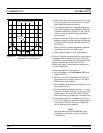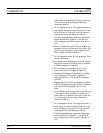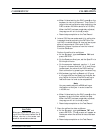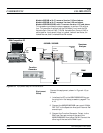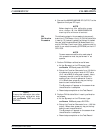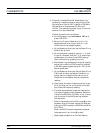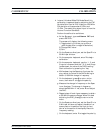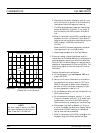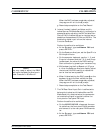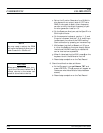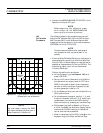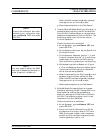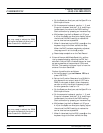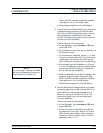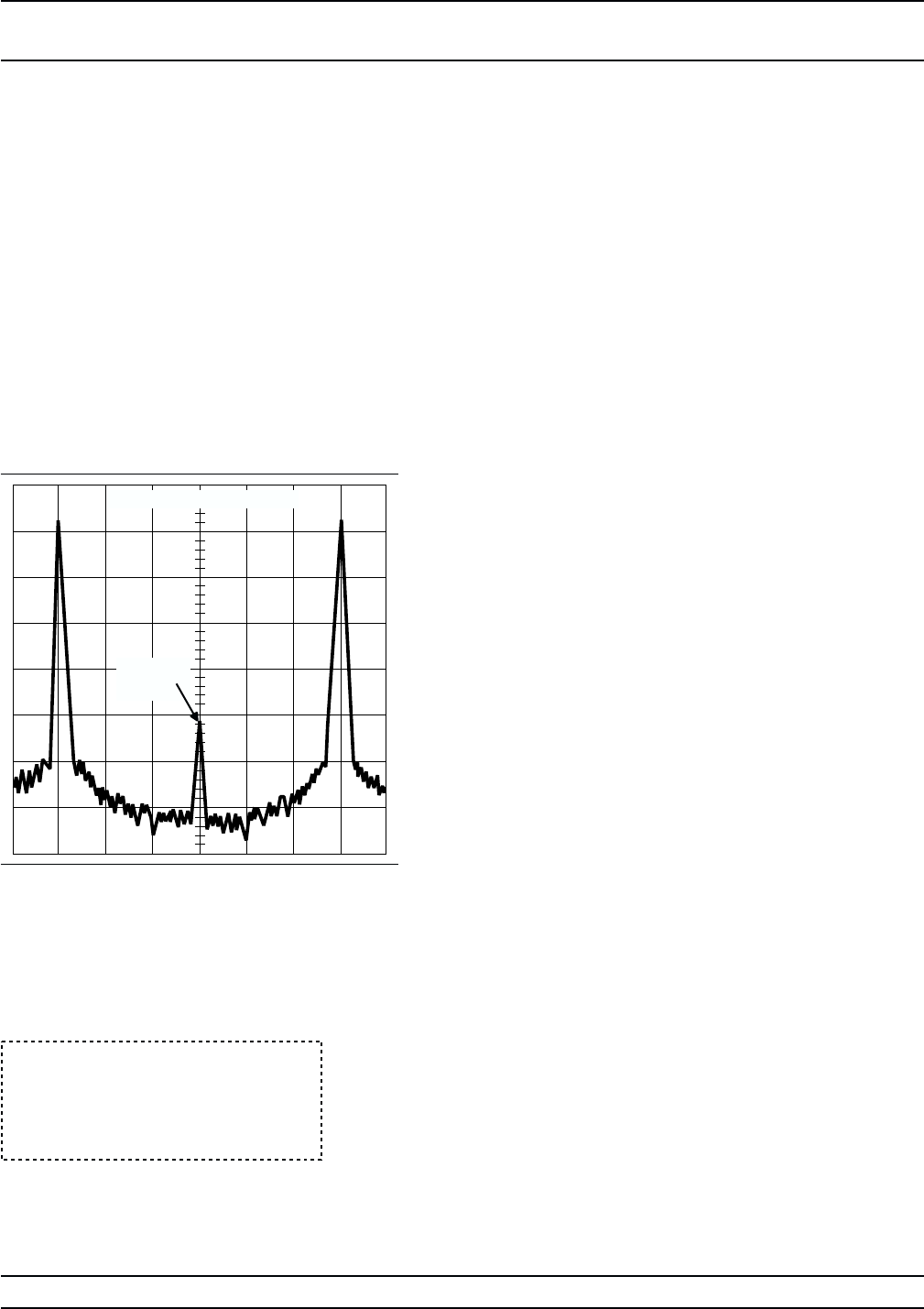
k. Now adjust the center frequency control to po
-
sition the low (or high) carrier at the center of
the display. Note the frequency reading.
l. The difference between these two frequencies
should be 200 MHz ±0.5 MHz. If not, enter
2
and fine adjust the DAC to obtain this devia
-
tion.
m.
When finished setting the DAC, press
Q on the
keyboard to return to the menu, then enter
3
to go to the next calibration step (adjusting the
DAC to obtain a 200 MHz deviation at
15 GHz).
When the DAC has been completely adjusted,
the program will exit to the
$ prompt.
n. Record step completion on the Test Record.
5. External Locked, Locked Low-Noise, and Un-
locked Narrow FM Mode Sensitivity calibration is
accomplished by adjusting the FM Variable Gain
Control DAC to reduce the carrier level as low as
possible at frequencies of 5 GHz and 20 GHz. The
modulating signal is from the external Function
Generator.
Perform the calibration as follows:
a.
At the
$ prompt, type: calterm 125 and
press <ENTER>.
b. Set up the Function Generator for a 99.8 kHz
sine wave with an output level of 0.707 volts
RMS (2 volts peak to peak). Use a frequency
counter to verify the output frequency of your
function generator is set to ±1%.
c. On the Spectrum Analyzer, set the Span/Div to
50 kHz per division.
d. On the computer keyboard, use the ‘, 1, 2, and
3 keys to increment and the 7, 8, 9, and 0 keys
to decrement the value of the DAC’s setting.
Start calibration by pressing an increment key.
e. While observing the first Bessel null (Figure
4-14) on the Spectrum Analyzer display, adjust
the value of the DAC’s setting to reduce the
carrier level as low as possible.
f.
When finished setting the DAC, press
Q on the
keyboard to go to the next calibration step.
4-48 682XXB/683XXB MM
FM
CALIBRATION CALIBRATION
CENTER FREQUENCY
BESSEL
NULL
Figure 4-14. Typical Spectrum Analyzer Display
of Bessel Null on FM Waveform
NOTE
You may need to adjust the RBW
setting on the Spectrum Analyzer in
order to see the >–50 dBc null.



